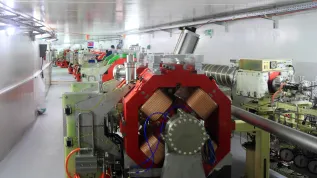
By 2020, scientists from the AGH University of Science and Technology in Kraków will build a supercomputer together with European partners. According to the Ministry of Science and Higher Education, it will be 10 times faster than the fastest computer currently operating in Europe.
The supercomputer will be installed in of eight supercomputing centres, whose locations were announced by the European Commission last week. European supercomputers will support scientists, industry and enterprises in developing new applications in a wide range of areas - from the development of drugs and new materials to combating climate change.
The work will be carried out as part of the European High-Performance Computing Joint Undertaking (EuroHPC).
The declaration on Poland`s accession to EuroHPC was signed in 2018 by Deputy Prime Minister, Minister of Science and Higher Education Jarosław Gowin.
According to the Ministry of Science and Higher Education, Poland is one of eight countries that form the LUMI (Large Unified Modern Infrastructure) consortium. Together with Finland, Belgium, the Czech Republic, Denmark, Norway, Sweden and Switzerland, it will participate in the development and installation a pre-exascale supercomputer and making it available to scientists. The installation planned for 2020 will take place in the Finnish data centre in Kajaani.
Poland is represented in the LUMI consortium by the Academic Computer Centre Cyfronet of the AGH University of Science and Technology in Kraków, the operator of Prometheus, the fastest supercomputer in Poland.
"The planned computing power of the supercomputer will be about 10 times greater than the Swiss Piz Daint - currently the fastest supercomputer in Europe. Thanks to this, European scientists and entrepreneurs will gain a tool previously available only to global leaders in the field of large-scale computing: the US, Japan and China" - the Ministry of Science announced.
Access to the supercomputer will be provided directly, as well as through the cloud.
The total budget of the system exceeds EUR 207 million. Half of this amount comes from the European Commission, half from the states forming the consortium. The Ministry of Science and Higher Education will allocate EUR 5 million. This support will provide Polish scientists - from both academia and industry - with direct access to the fastest European computing resources, emphasizes the Ministry of Science.
The ministry reminds that Polish scientists now use existing supercomputers for studies of artificial graphene leaves that reproduce the photosynthesis process; computer drug design, modelling enzymes and efficient catalysts, elementary particle simulations; analysis of gravitational waves.
"Large-scale computing will allow to carry out much more advanced research than today. New capabilities will allow to make breakthroughs in science. Overcoming the existing restrictions will contribute to new achievements in the field of chemistry, materials engineering, biotechnology, physics or medicine" - the Ministry of Science points out.
According to the Ministry of Science, the computing power of the supercomputer from the computing centre in Kajaani will also allow to tackle such research problems as forecasting climate change, development of artificial intelligence and production of clean energy; it will also support research in the field of personalized medicine.
The supercomputer will consist of three partitions: acceleration, based on general purpose GPUs, classic, based on traditional CPUs, and a data analysis partition.
The planned computing power of the EuroHPC supercomputer is approx. 200 PFlops, or 0.2 EFlops. For the purposes of calculations, the supercomputer will be equipped with storage resources with a capacity exceeding 60 PB, including fast flash memory with a bandwidth of over 1TB/s.
PAP - Science in Poland, Beata Kołodziej
bko/ agt/ zan/ kap/
tr. RL













